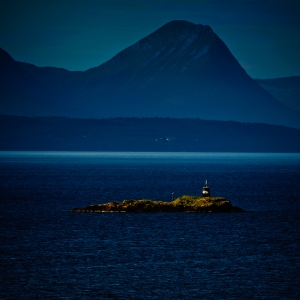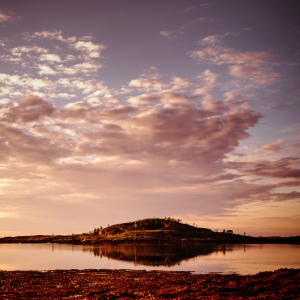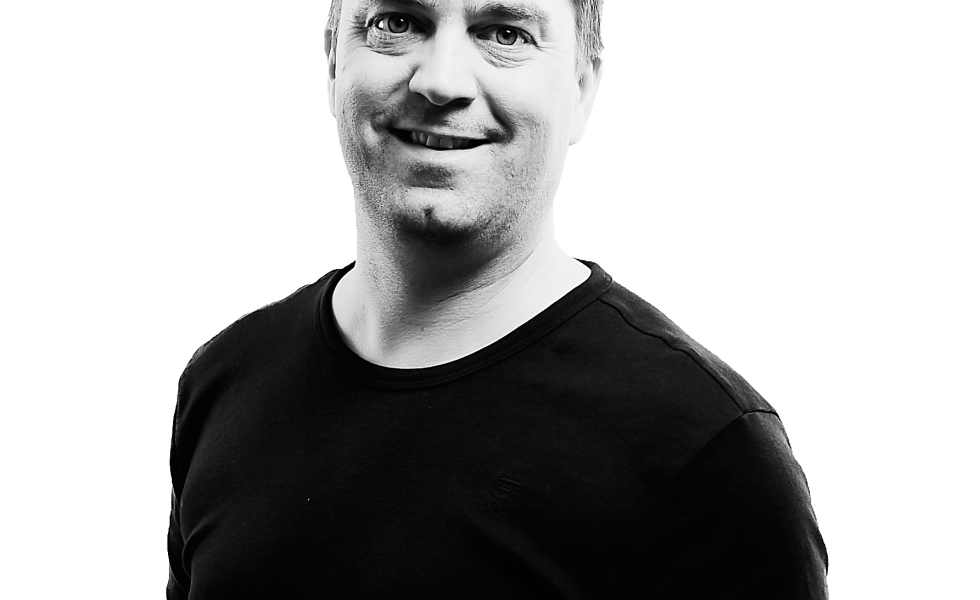Where to go when in Norway?
Posted on July 18, 2013 Leave a Comment
There are of course several places one should go when one find the money to go to Norway. Maybe the one place to start is Geiranger? Voted the most beautiful by the National Geograpic Traveler. Not once, but twice!
On of the most famous fjord of the world, lies on the west coast of Norway. At the end of the fjord, you find the small village that has given the fjord its name: Geiranger. To get there you can travle over the mountains or come from the coast by a breathtaking serpentine road, Trollstigen. It will take you right on top of the mountain on a steep incline of 9%. Think Tour de France and one of the last kilometers of any mountain-stage.
A collection of my pictures are for sale at my 500px site.
While you are in the general area, why not continue towards the coast? There you have the Atlantic Sea Road. The name itself doesn’t give away what it really is: a miniature High Way 1. You are really close to the sea, traveling between several islands. Small fishing-villages lead the way, and the photographic moments are not few. We stayed in Molde one night, and I made the phot “Molde by dawn” from the hotel-window.
Speaking of dawn. It comes early in the summer, and you need to stay up late to see the sunset. But when it comes it is worth the wait. There is of course several places to visit when (not if) you come to Norway. This is just the beginning!
What to do when in Oslo (part 2)
Posted on July 16, 2013 Leave a Comment
The most central part of Oslo is the blocks around main street – Karl Johan. The name of the street comes from a french soldier that ended up as the king of Sweden and Norway. (Yes, strange things happened in the old days!) I started my own vacation by making a photographic journey all by my self up and down the street.
If you didn’t get part 1 of When in Oslo – here you go!
The street (singulars) is actually not accurate, as the street is made up from several streets. The eastern part belonged to the inner part of the old city (within the walls of the city – way way back) and the broad part of the street, closest to the castle, is newer and was called Slotsvejen (“the Castle Road”). The two parts of the street meet on the Eger Square. And if you know the history (as you do now), you will most likely see that the street changes drastically. So when you come to Oslo you can say: “See the street changes drastically, do you know why?” You will probably get a free lunch from your fellow travelers for that piece of information. So, you are welcome! (Yeah right!)
Back to the present day. This friday I wasn’t that interested in the history of the street, more of the people walking and shopping up and down it. So I turned into a street-photographer! (And this is probably what most people do, when they are in Oslo.)
A collection of my pictures are for sale at my 500px site.
For me street-photography is to challenge boarders, mostly my own. But never over-stepping them, mostly other peoples. The law says that you are allowed to take any picture of anybody as long as they are on a public place. Some (the most of them) doesn’t care. Some do. And having an intrusive camera as the D3S doesn’t help. So I have to use my ears as much as my eyes. The man playing the guitar wasn’t very pleased when he saw me. Don’t know why. Maybe because I didn’t have any spare change. I usually don’t have any coins at all. I am an all-card kind of guy. He of course didn’t know that, and turned his back at me. Fair enough. I did get one picture of him, which was enough for me. The irony of the situation is however, that I was on his side. I wanted the picture to show that the life for the troubadour isn’t easy. For the most part tourists like to have them there when they visit a town, but they seldom give them any money. Most people walk straight by. Maybe they don’t like the music or they don’t have any change. That is a shame. Then again, neither had I.
Other than music there is always people selling soap-bubbles. This is (mainly) for the kids to chase after. But now ant then there are grown-ups equally interested in them. What is it with bubbles that fascinates us all our lives?
Now to the pictures I made.
Decision-time! What gear to bring on a holiday? Also, tips on underwater-photography.
Posted on July 12, 2013 Leave a Comment
With still some time until a week in the sun, I have enough time to make an important decision. What photo-gear should I bring with me? Do I really need my big, heavy D3S? No, not really. The best camera is the one you have with you, and I have no intention to bring that camera with me in the water playing with my daughter. I have no intention to have it at the beach. So, do I need a new, lighter, waterproof camera?
Maybe the iPhone is enough? It is a pretty good camera. I used my iPhone to take the picture featuring this post. But when it comes to (under)water pictures, I rather not make a fool out of me destroying it. So, the iPhone is out! I will still bring it, and will most likely use it to make short movies. It is good to send post-card with too. There is no need to use hours of finding the right post-card, not to say finding stamps.
A collection of my pictures are for sale at my 500px site.
I did some research on line, and I made my way to the store today. Yes, I still think some thing are better if you can see feel and try it out first!
At the store I tried out the Nikon 1 J3. I thought it was a good enough camera. At the store they said it had the same quality as the Nikon 1 V2, just a little more awkward when it came to using the manual-mode. But it also has a waterproof housing made especially for it. It has raw-format ability. HD-video. Changeable lenses.
So it made the cut.
Now to the important part. The one that you really need to take with you, if you want to make good pictures. No matter what camera you bring, this is true every time. It’s also very cheap, actually it is free. Because no matter what camera you make your pictures with the ordinary photography-rules still apply! In or out of the water. So here goes:
- Get closer! (Unless you are in the water and you meet a shark, then swim and pray you are not the prey)
- Show some scale! (Especially if you want to show thing that people really don’t know the size of. Use something they do know the size of.)
- Composition matters! (You need to guide the viewers eyes through the picture. The right use of the golden rule and lines etc really makes a difference.)
Now to some underwater tips.
Use the camera’s underwater mode! (The light underwater isn’t the same as above. It’s not sure your eyes will see it, but the camera will. So if you have an underwater-mode, use it!)
Use flash if you go deep! (There isn’t as much light under water. You need to use the flash.)
Stay tuned to see what kind of photos I got.
What to do when in Oslo? (part 1)
Posted on July 11, 2013 3 Comments
I have meet a lot of people around the world. Some of them ask me what one can do and see if one comes to Oslo. This post is the first of several about Oslo. Let’s begin with a truly amazing park. It is a life-time of work with 212 sculptures in cast-iron, granite and bronze. When in Oslo, it is well worth a visit.
The Monolitt is the crown of the Frognerpark, which contains 212 sculptures in granite, cast-iron or bronze. The Monolit it self is 17 meters and stands maybe as a symbol of the human struggle for the Devine? Are the 121 figures drawn up towards the heaven? Nobody knows, but you can find hope, despair and longing amongst the people carved in stone over a period of 14 years.
A collection of my pictures are for sale at my 500px site.
From a photographers point of view the park is a free-models-who-stand-in-posision-forever paradise! Here you have over 200 statues in every thinkable posision, you have as many stone statues you would like and you have the monolit, where numerous of people climbe, sit, give up, struggle, live or die.
I used one early moring to go there to take some photographs. I stood up at 5.45 am (OK not so early), the park was empty, and I could find a parking-lot just outside of it. The parking-lot is free until 9 am, but it has only a few slots.
The sun was on its way up and gave me some dramatic shadows. It was just for me to set up my manfrotto and start taking pictures. The granit calls for black and white pictures, but the bronze are well suited for color pictures. The park are over 800 meters long with water, a fountain and lot’s of grass. You can often see dogs and their owners doing their thing, or families having a picnic in the park during the summer-times.
For americans – this is the park where the 4th of July party is arranged every year in Oslo, usually on the weekend before 4th of July.
Back to the Monolitt. The solide stone were the work of three stone-carvers over a period of 14 years, between 1929 – 1943, the vision was Gustav Vigelands alone. Gustav Vigeland lived between 1869 – 1943.
Sports for all!
Posted on July 9, 2013 Leave a Comment
Every year Akershus idrettskrets (only in Norwegian), my work-place, organize a camp for disabled kids. The norwegian sport confederation have the vision “Joy of sports for all”, and these kids certainly make that vision come true!
It is such fun to be a small part of their joy for sports and activity.
A collection of my pictures are for sale at my 500px site.
Who am I?
Posted on May 24, 2011 Leave a Comment
I am a swede living in Norway, which is much like an american living in Canada. More snow, less people.
I am also an aspiring photographer. Some days I almost feel like I am a photographer. Most days I just feel like I am messing things up.
I am also a dad and husband. Some days I feel like I mess that up too.
I am a Nikon-shooter, but that is not a religion. It just happens that it was a Nikon camera that I picked up, and I stayed with it. I am happy with it too.
I am also (and this is bragging I know) a three-time winner og the local Scott Kelby’s World Wide Photo Walk. Once in New York, twice in Oslo. One time I was also picked out as one of the 11 best that year (worldwide).
I am also working.








































